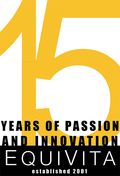Cheryl Harris, Master Licensed Massage Therapist
In working every day with people that have some sort of job or hobby, I see a lot of people who are 'chained' to a desk all day for their jobs. What can this do, over time, to a person's body? What can a Massage Therapist see that the person sitting at the desk working doesn't? What can we do to counteract some of those things that are happening?
These are all questions that can come up, especially when seeing a client for the first time, which leads to me asking a lot of questions before clients even have a chance to get on my table! I do ask people about where they work, or what they do during the day (if they are not working), how they spend their time, etc. A lot of times I will even have conversations about how folks are sleeping. Why? Why all the questions? It's helpful to me, as a therapist, to be able to discern where problems could be stemming from in their bodies.
So, let's say someone has a seated job. What could happen to their body that would create tension and pain and how could massage benefit them? Let's start with the legs. If you sit at a desk, your legs are bent a the knee, and at the waist. This can create tension in the hamstring muscles, or the back of your thighs. Being in that position continuously doesn't allow for the muscles to move, or get very much blood flow, so they can lean toward being tight and not very mobile when you want or need them to be. This can also be reflected in the lower back and hips, due to not moving very often, or being 'stuck' in a chair.
Now let's look at the neck, spine and shoulders. If your job involves looking at a computer all day, pay attention. Often times employers don't or can't fit folks for their desks and understandably so, simply because it would be expensive to do this for every person. In a perfect world, we should be looking straight ahead at our computer monitor. Not up. Not down. Straight ahead. Easier said than done, for sure. If we are looking down at a monitor, we can stretch the muscles in the back of the neck forward, to make it 'easier' for us to work.
Where is the mouse you use for your computer, on your desk? Do you reach for it? This can be another thing that pulls your body in a way that makes you tight. The muscles on the back of your shoulder and spine now also have to stretch forward to reach your mouse and be able to use it. A sort of small thing, but over time, it can affect how you move your body.
How is your chair that you sit in at your desk? Do your feet hit the floor? Are you leaning forward so you can see your monitor better? Do you get caught up in a great creative idea and just keep going until you finally feel that you can't move your neck or back very easily? These are all things that can contribute to aches and pain and tension in the muscles of your neck and spine.
There are easy fixes for a lot of these. Start with the sitting part. Set a timer on your computer or your phone-whatever is easy, and get up and walk around the office for a few minutes. Take a walk to the bathroom or the water cooler or just go up a flight of stairs and back down. For the neck, stop and take a minute to look up at the ceiling. Sounds strange, yes, but you won't be looking down at your monitor! You can also take just a minute to sit back in your chair, pull your shoulders and your neck back and let them breathe for a minute or two. Roll your head slowly around in circles. Any of these small easy movements will help to create some blood flow and that's what we need. As for sitting properly in your chair, I would guess that most of us aren't and don't do it consistently. In theory, 'the best' position to be in is sitting up straight, (on your sits bones) with your shoulders pulled back and ab muscles squeezed tight. Yep, I don't do that all the time either! It's a hard thing to maintain constantly, but once you train your brain (and your muscles) that it's something that needs to be done, it will become easier. All of these are suggestions that I send my clients home with. They are easy, free and can be done anywhere. Perfect.
Massage can be a huge help with all of these postural tensions as well. It can help create more blood flow and working on the muscles can help offset some of the positional problems that arise. We can stretch the muscles and, quite literally, retrain them as to what position they need to be in, as opposed to what position they want to be in. Our bodies like to work against us when it comes to how we do things, simply because it's easier for the body to maintain. Massage can help disrupt that 'easy' thought and make your body get into a better place and make the maintenance easier. Sometimes massage needs to be therapeutic in order to address some of these issues or, sometimes people just need to relax and let go of the tension to address their issues. Whatever your need is, massage is a great addition to help you maintain your health and well being.
I'm happy to answer any questions you may have so feel free to send me a note at [email protected]! Hope you get yourself on a massage table soon!by

 RSS Feed
RSS Feed
